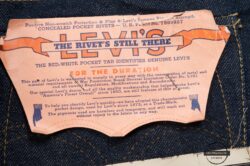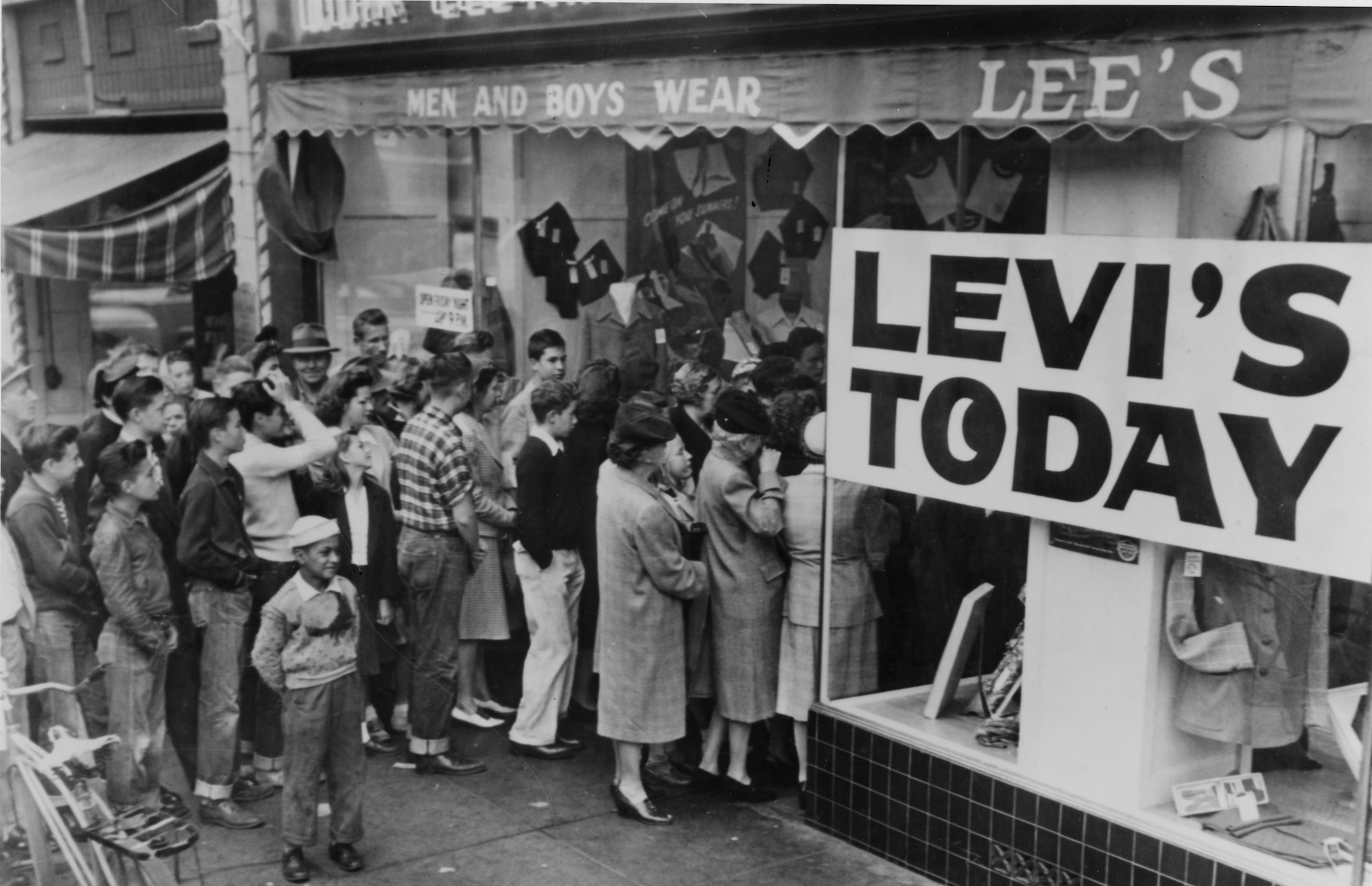On Sept. 2, 1945, 75 years ago this month, formal surrender documents were signed aboard the U.S.S. Missouri, marking the official end of World War II. The Second World War had far-reaching consequences on the economy and global order. There were also significant social and cultural effects of the war, which impacted everything from food to fashion — including our very own Levi’s® garments.
From debuting overseas to changing its features, here’s how World War II helped shape today’s modern jeans and jackets.
Sales Expand Abroad
Prior to the 1940s, most of Levi Strauss & Co.’s retail customers were in the West. The company had selected the cowboy as its symbol a decade earlier and targeted the 11 Western states to build up its customer base after the Depression, advertising in every leading Western agricultural paper from the Washington Farmer and California Cultivator to The Arizona Producer.
This strategy changed during World War II when, among other tactics, LS&Co. created the first overseas sales to U.S. military exchanges in Europe and the Pacific. This may have been spurred by official requests for dungarees (aka blue jeans), like this telegram sent to LS&Co. from Rear Admiral W. B. Young, U.S. Navy Chief of the Bureau of Supplies and Accounts:
In every invasion, dungarees are the basic battle dress of our Navy Blue Jackets. Dungarees are the garments you see our men wearing in all combat photos which show American sailors at their guns or passing the ammunition. To keep our fighting men supplied, the Navy now needs large additional supplies of these garments. Your efforts in producing Navy dungarees are just as vital as those of the workers turning out munitions of war. The Navy counts on your full cooperation so that none of our fighting men will be deprived of the dungarees they need [August 16, 1944].
With Levi’s® now being sold in locations ranging from Japan to Germany, civilians abroad were exposed to Levi’s® products, creating some of the first European demand and interest in Levi’s® overseas.
Regulated Garment Alterations
Levi’s® garments were designated “staple work clothing” according to the written rules of the War Production Board. Classified as work garments made of “cotton body materials,” wartime Levi’s® included overall jackets and “waistband overalls or dungarees.” This meant that Levi’s® costs and clothing construction details were controlled by the Office of Price Administration to ensure affordability and conserve material for the war effort.
In response, LS&Co. made many mandated alterations to our garments. Pocket flaps were removed from Levi’s® jackets, as were the crotch rivet and watch pocket rivets on our 501® jean. The Arcuate stitching design on the back pockets also disappeared, as the thread was considered decorative and did not have a function on the garment. Concerned that selling the overalls without the Arcuate stitching would confuse consumers, we came up with a temporary solution: we painted the stitching on each pair.

LS&Co. attached a redesigned wartime “pocket flasher” to the back pocket of the 501® to indicate compliance and assuring consumers that “all the quality workmanship that helped make Levi’s ‘America’s Finest Overall’” were still there. The pocket flasher also called out the Arcuate, saying that it would only be painted “For The Duration.”
We made other adjustments as well based on the availability of materials. Branded buttons were replaced with standard-issue buttons with a laurel leaf design, for instance, and military green fabric was sometimes used in place of white pocket bagging.
Wartime Levi’s® Purchases
Throughout the war, people were buying and wearing these redesigned Levi’s®. For example, Bruce MacKinnon, a Marine, received three pairs of Levi’s® by mail while stationed in Hawaii. He had written his mother requesting the coveted jeans. She scoured stores in search of them, eventually tracking down the hoped-for three. Bruce was delighted when the Levi’s® package arrived. To keep them safe from the other Marines, he slept on all three pairs at night.
From Hawaii, Bruce shipped out to Saipan where he was photographed there for a story that ran in the newspaper. His mother recognized Bruce instantly, thanks to his curly hair and his signature blue jeans. He was wearing his Levi’s® “with the cuffs turned way up,” she later told a reporter.
It wasn’t just men wearing Levi’s® during the war, however. Phyllis Gould, who worked at the shipyards in Richmond, California, dressed for work every day in Levi’s® 501® jeans. As a journeywoman welder, Phyllis found the thick denim suited her needs. “Levi’s® jeans protected me from the welding sparks,” she said. “I was never burned wearing Levi’s®.”
Post-War Legacy
In 1947, the post-war version of the 501® jeans began coming off the production line. The cinch was gone forever and the crotch rivet became a thing of the past. Rivets were put back on the watch pocket, and the Arcuate was stitched once again with one change — a double-needle machine creating a “diamond” shape at the point where the two lines of stitching meet.
This cinch-free blue jean with the uniform look of the Arcuate, a contrast to previous years when the single-needle application made each Arcuate design unique, was the blue jean of the future and you can still see it in our 501® jeans more than 70 years later.
Levi’s® emerged from World War II as fresh, modern and uniformly manufactured. And with a distribution that now spanned oceans, it was well on its way to becoming the world’s ubiquitous global garment that it is today.







